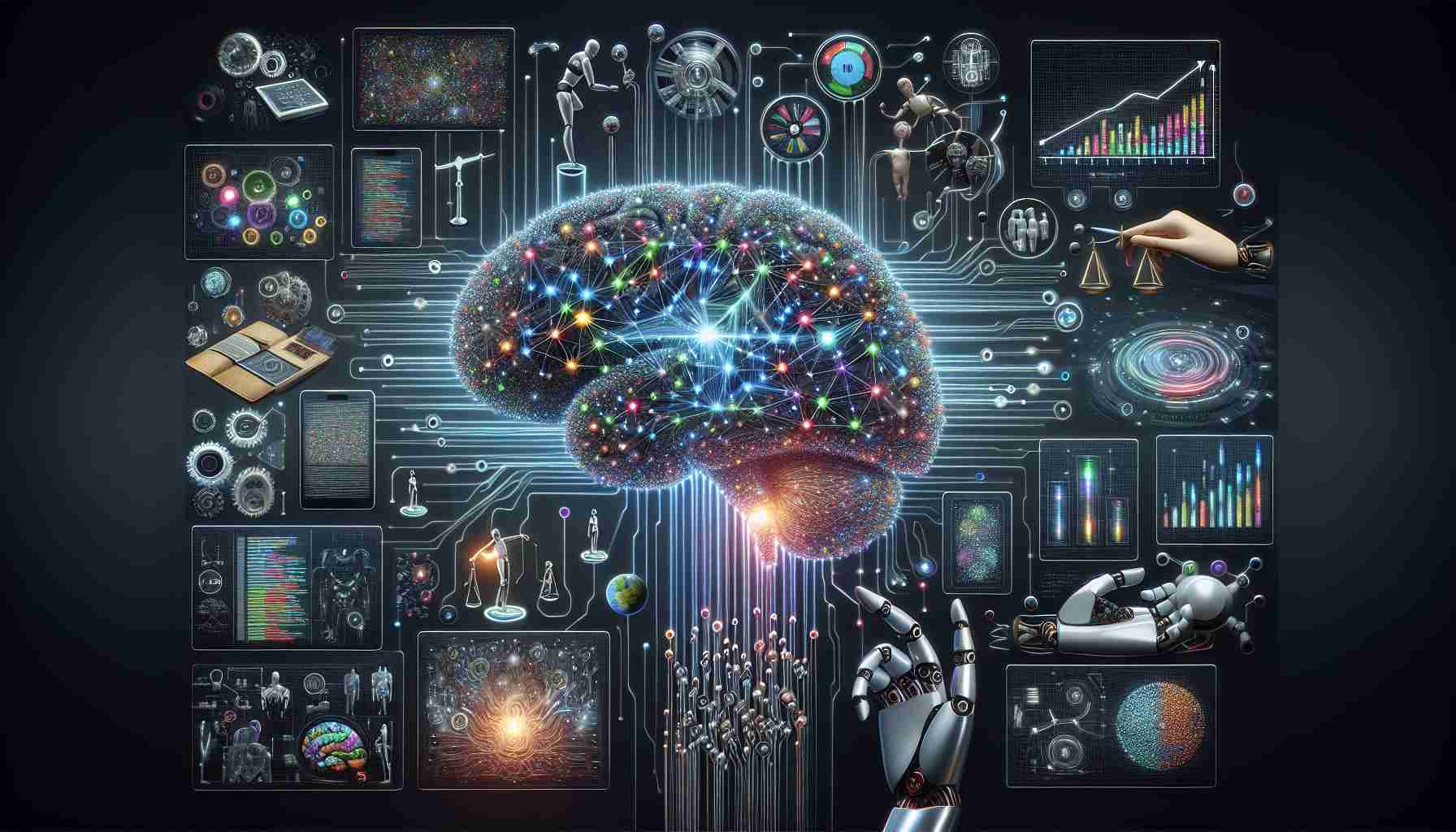Artificial intelligence (AI) has long been a subject of fascination and speculation among experts in various fields. The idea of AI surpassing human intelligence has been a topic of intense debate and prediction for decades. However, recent advancements in generative AI, such as OpenAI’s ChatGPT, have ignited a heated race among big tech companies to develop their own language models and refine their AI platforms. This has led to the question of when AI will surpass human intelligence.
Renowned futurist Ray Kurzweil has been a key figure in this discussion. With his analysis of the exponential growth of technology, particularly in AI, Kurzweil predicts that AI will achieve human-level intelligence by 2029. This timeline, although ambitious to some, is considered conservative by Kurzweil himself. In fact, he had foreseen this advancement as far back as 1999.
Elon Musk, CEO of Tesla and a vocal critic of AI’s potential risks, believes that AI surpassing human intelligence is even more imminent. Musk suggests that AI could potentially outmatch any single human as early as next year, and by 2029, it could even exceed the collective intelligence of all humans combined.
While the exact timeline remains uncertain, what is clear is that AI development is progressing rapidly. This presents both exciting possibilities and significant challenges. As AI becomes increasingly sophisticated, it is crucial for humans to prepare for its integration into various aspects of our lives. Harnessing AI’s power for the greater good while addressing ethical concerns and mitigating potential risks is a paramount responsibility.
The future of AI will shape our world in profound ways. It is essential for individuals, institutions, and governments to embrace this transformative technology cautiously and responsibly. The coming years will undoubtedly be pivotal in defining the boundaries and utilization of AI, and it is imperative that humanity remains at the helm of its development.
Frequently Asked Questions (FAQ)
- What is artificial intelligence (AI)?
- What is generative AI?
- Who is Ray Kurzweil?
- What are the potential risks of AI?
- How can AI be harnessed for good?
Artificial intelligence, commonly known as AI, refers to the development of computer systems that can perform tasks that typically require human intelligence. These tasks include speech recognition, decision-making, problem-solving, and learning.
Generative AI is a technology that uses algorithms to generate content, such as text, images, or videos, that is indistinguishable from content created by humans. OpenAI’s ChatGPT is an example of generative AI.
Ray Kurzweil is a renowned futurist, inventor, and author known for his predictions and analysis of technological advancements. He has been a prominent figure in the fields of AI and futurism for many years.
AI poses various risks, including job displacement, privacy concerns, biases in decision-making algorithms, and the potential for AI systems to be exploited for malicious purposes. It is crucial to address these risks to ensure the responsible and beneficial development of AI.
AI has the potential to revolutionize numerous fields, including healthcare, transportation, and education. By leveraging AI’s capabilities, we can improve efficiency, enhance decision-making processes, and address complex societal challenges.
The information in this article is for informational purposes only and should not be considered as financial, legal, or professional advice.
Frequently Asked Questions (FAQ)
- What is artificial intelligence (AI)?
- What is generative AI?
- Who is Ray Kurzweil?
- What are the potential risks of AI?
- How can AI be harnessed for good?
Artificial intelligence, commonly known as AI, refers to the development of computer systems that can perform tasks that typically require human intelligence. These tasks include speech recognition, decision-making, problem-solving, and learning.
Generative AI is a technology that uses algorithms to generate content, such as text, images, or videos, that is indistinguishable from content created by humans. OpenAI’s ChatGPT is an example of generative AI.
Ray Kurzweil is a renowned futurist, inventor, and author known for his predictions and analysis of technological advancements. He has been a prominent figure in the fields of AI and futurism for many years.
AI poses various risks, including job displacement, privacy concerns, biases in decision-making algorithms, and the potential for AI systems to be exploited for malicious purposes. It is crucial to address these risks to ensure the responsible and beneficial development of AI.
AI has the potential to revolutionize numerous fields, including healthcare, transportation, and education. By leveraging AI’s capabilities, we can improve efficiency, enhance decision-making processes, and address complex societal challenges.
Definitions:
– Artificial intelligence (AI): The development of computer systems that can perform tasks that typically require human intelligence, such as speech recognition, decision-making, problem-solving, and learning.
– Generative AI: A technology that uses algorithms to generate content, such as text, images, or videos, that is indistinguishable from content created by humans.
– Ray Kurzweil: A renowned futurist, inventor, and author known for his predictions and analysis of technological advancements.
– AI risks: Potential risks associated with AI include job displacement, privacy concerns, biases in decision-making algorithms, and the potential for malicious exploitation of AI systems.
– Harnessing AI for good: Utilizing the capabilities of AI to revolutionize fields such as healthcare, transportation, and education, improving efficiency, enhancing decision-making processes, and addressing complex societal challenges.
Suggested related links:
– OpenAI
– Tesla
The source of the article is from the blog japan-pc.jp

